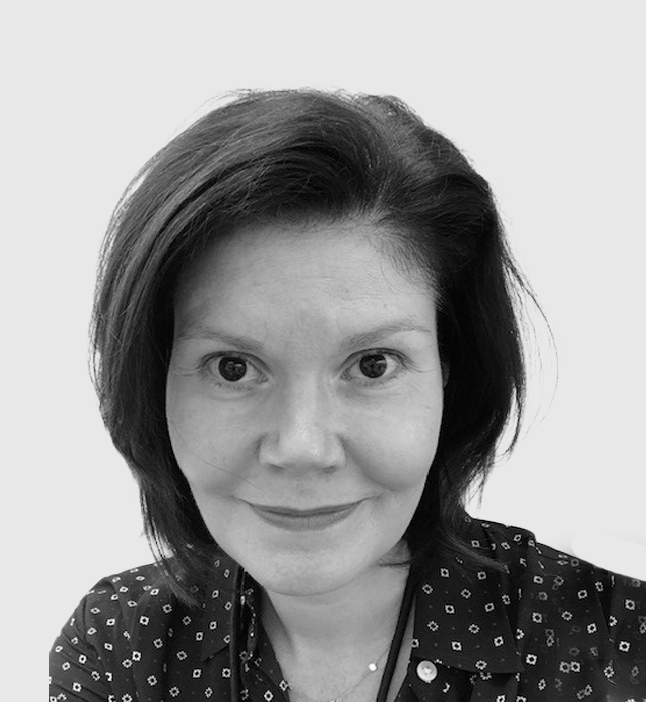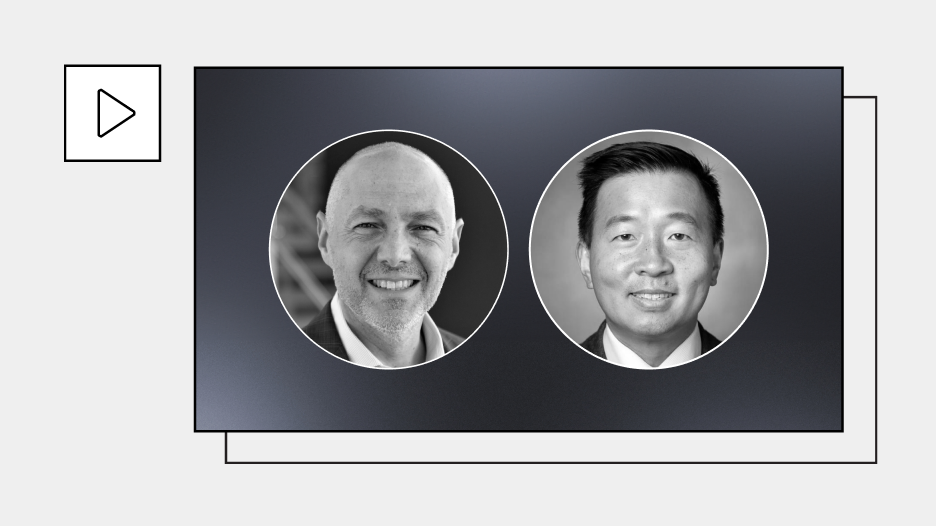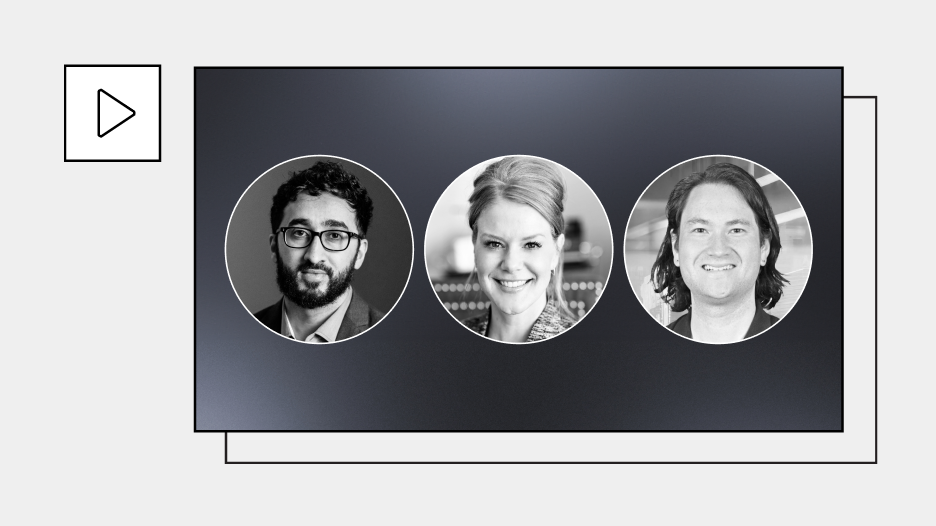-
PROVIDERS
New MRD Medicare Coverage for Select Indications*
*When coverage criteria are met. Additional criteria and exceptions for coverage may apply.
-
LIFE SCIENCES
ENROLL NOW
Tempus’ patient-derived organoid screens
Evaluate the efficacy of your preclinical compounds using fixed organoid panels designed for diverse therapeutic applications -
PATIENTS
It's About Time
View the Tempus vision.
- RESOURCES
-
ABOUT US
View Job Postings
We’re looking for people who can change the world.
- INVESTORS
06/13/2023
Using data and AI/ML to achieve precision medicine
During the 2023 AACR conference, leaders from Tempus and GSK discuss the use of multimodal RWD and AI/ML to power the next era of drug development.
Authors
Kate Sasser, PhD
Chief Scientific Offficer, Tempus

Anne-Marie Martin
SVP and Global Head of Experimental Medicine Unit, GSK

Chief Scientific Offficer, Tempus

Anne-Marie Martin
SVP and Global Head of Experimental Medicine Unit, GSK

The concept of personalized medicine – which describes the practice of delivering the right treatment to the right patients at the right time – has become a reality in healthcare over the last several decades. Bolstered by the evolution in quality of available real-world data (RWD) and artificial intelligence (AI) / machine learning (ML) technologies, the industry is well equipped to realize the potential of precision medicine and improve patient care. At Tempus, we’re proud to partner with organizations like GSK to advance the use of multimodal RWD and AI/ML to power the next generation of drug development. During the 2023 meeting for the American Association of Cancer Research (AACR), Kate Sasser, PhD, of Tempus, and Anne-Marie Martin, PhD, of GSK, sat down for a fireside chat about how we can leverage the tools and technologies available to advance precision medicine and strengthen cross-industry partnerships. Their discussion is summarized below.
Responses have been edited for clarity and length.
Dr. Kate Sasser: I’m Kate Sasser, Chief Scientific Officer at Tempus. Prior to this role, I spent about 20 years in the biopharma and biotech industries, most recently at the antibody company Genmab and previously at J&J. I’m thrilled to have Anne-Marie Martin here with me today. She’s the SVP of Experimental Medicine at GSK, and, prior to that, had a 20-plus-year career developing drugs across Novartis, Adaptimmune, and GSK. You’re the perfect person to have this conversation with, so thanks for joining us. |
|
Dr. Anne-Marie Martin: Thanks, Kate, and thanks to everyone who has joined us here today. I’ve been in the industry for just over 20 years, always watching the precision medicine space. At GSK, I’m currently accountable for all translational clinical biomarker diagnostic development across our entire oncology pipeline. |
Dr. Sasser: Precision medicine has been at the forefront of science – and certainly oncology – for the last 20 years, and it’s just now becoming a reality. We can now integrate biomarkers and diagnostics earlier to guide us toward the right drug for the right patient at the right time. Do you agree that we’ve reached an inflection point? What trends are you most excited about? |
|
Dr. Martin: We’ve seen many examples of precision medicines; more and more drugs approved in a given year are now in this category. The traditional approach to precision medicine was with single biomarkers associated with single drugs, but in the past few decades we’ve advanced with the emergence of immuno-oncology therapies and the increasingly complex patient selection process based on multiple biomarkers. What excites me most is the convergence of technology and data science., and how we can maximize the information gleaned from biomarker data – not just PD-L1, dMMR, and MSI-H, which are common but imperfect biomarkers, but other data types as well. This will help us to further refine patient populations and move from precision to true personalized medicine in oncology and other disease areas, including inflammatory diseases or Parkinson’s disease. |
Dr. Sasser: Let’s talk a bit more about the idea of going from single biomarkers to a multimodal approach, or even using algorithms behind the scenes to combine DNA, RNA, and imaging data in a way that functions as a biomarker. What is your perspective on this shift? What challenges do you anticipate? |
|
Dr. Martin: In our trials, we typically collect samples at baseline, on therapy, longitudinally and, at the end of treatment. These samples are important to helping us understand, at the individual and population levels, what differentiates the responses or lack of responses for patients. These biological data that we generate beyond the patient selection criteria will be crucial in defining patient populations as we move forward. So how are we doing this in our studies where we generate data? I liken it to ”throwing the kitchen sink” at the study. We want to maximize the information we can generate from the patient samples we collect, then use those data to refine the outcomes we observe in the study. Though getting to the point where we can use those data to select patients will be challenging, data science and AI/ML can help us use advanced data and analytics approaches to make sense of multimodal data, and even power algorithms that can become the diagnostics of the future. But to get to that point, we’ll need access to, and the generation of, a lot of data to define those algorithms in the first place. It’s going to require an ecosystem to help us achieve that goal. |
Dr. Sasser: Tempus and GSK have worked together to integrate molecular data with real-world clinical data for biomarkers of interest, then understand how those align with patient response. How is your team approaching this work? |
|
Dr. Martin: The beauty of the Tempus dataset is the matched clinical and genomic data. Because Tempus has access to so many cancer patients in the US, we can look into specific patient populations at their stage of disease and treatment with the standard of care, then extrapolate molecular characteristics associated with those patients and their outcomes. This helps us select the patient populations we want to bring into our studies and understand the frequency or levels of different biomarkers of interest. From here, we can think about how we may use the biomarkers in the selection, stratification, or monitoring of patients in our studies. Having so much clinical genomic data is immensely important to helping us understand not only the patient populations we aim to treat, but also to confirm the natural history of biomarkers. If we’re interested in an expression of a biomarker or signature, for example, we use the data to understand how a signature holds up under certain treatment interventions and at what stage of disease to enroll patients in a study. |
Dr. Sasser: The liquid biopsy space is rapidly evolving; we’ve seen the data used alongside other parameters to inform longitudinal monitoring of patients. How do you think about these technologies? |
|
Dr. Martin: There are many applications for which we can use liquid biopsies in our clinical studies. ctDNA can be used to help monitor patients, assist with patient selection, or identify risk of early relapse. We incorporate ctDNA into all our oncology GSK-sponsored studies, and we use tumor informed or uninformed approaches, and we use assays with short or broad gene panels. The assay you use depends on the question you’re asking at the time in a patient’s journey for which you are wanting to intervene with treatment. If you want to select a patient for a study based on a specific signature, biomarker, variant, or allele fraction, you’ll focus more on sensitivity. If you’re thinking about early detection, you may be thinking more about specificity in addition to sensitivity. One thing to note about liquid biopsies: In research and drug development, we want to maximize the information we get from samples. Having access to large panels of data is important, but we also need to figure out how patients can access these types of genetic testing in a sustainable way. It’s not just about getting the maximal amount of data, but how then do we translate it into something that’s usable, cheaper, and easier for the patients? We’ve learned lots from COVID-19 at-home testing, including with technologies that lead to faster answers in smaller panels. |
Dr. Sasser: As a technology company in healthcare, Tempus combines “true tech” – software engineering, AI, and ML – and biomedical technologies like NGS testing alongside partners like GSK. Now, we also see Amazon, Apple, and other Silicon Valley tech companies moving into the healthcare space. How can we make sure we’re leveraging strengths from both sides? |
|
Dr. Martin: First of all, this is the direction the industry is heading in, so we have to work together with health and tech companies, learn from each other, and share information where we can, to continue to advance the field. Our ability to incorporate AI into our work relies on how much data we generate or access, and the speed at which it’s happening. Today, we are accessing, generating, and analyzing data like never before, and we’ve hit a crucial point in how we collaborate and use information to advance the field. Most of the data available to us is unstructured, so we have to work together as a community to make sense of these data and standardize the analyses we use to generate the most valuable insights. Being able to share insights with collaborators helps ensure the information we bring to the community is accurate and reliable. This is critical, especially because it pertains to patient health. Collaboration won’t be easy, but it’s necessary. |
Dr. Sasser: Are there key areas where you expect to see AI deliver especially well on its promise to transform healthcare? |
|
Dr. Martin: We know that AI can recognize and decipher sophisticated patterns, and it can identify things that the human eye can’t see. Using data like those we generate from clinical studies, AI can help us draw conclusions from multimodal data, then tie them back to biological inferences. In the future, I believe algorithms from an H&E slide could be the path forward for selecting patients; we’re already seeing this emerging for dMMR, HRD, and other biomarkers that we, in the past, needed to use several tests to identify in patients. On the radiology side, radio-omics is an emerging field. AI is already helping to detect breast cancer years before it’s first seen in traditional imaging. In addition, AI is helping to identify patients at risk for cardiovascular disease. In these examples, the beauty is in the future. One could foresee the ability to forego the need for additional testing. It may not all go away, but we may be able to understand more from one image that we can’t today. We’re continuing to watch this space. |
-
12/04/2025
Pioneering decentralized oncology trials: Success at the nation’s largest community practices
Hear directly from industry leaders and pioneering site partners as they share insights on expanding their research footprint and improving financial sustainability for their institutions.
Watch replay -
11/06/2025
Beyond imaging: Leveraging molecular tools to detect MRD for personalized cancer care
This webinar explores the clinical value of MRD testing and IO treatment response monitoring in oncology, using real-world cases to illustrate its application in patient management.
Watch replay -
10/21/2025
How to reduce your documentation burden with AI
Discover how an AI-powered clinical notetaker can reduce documentation stress and add time back into your day.
Watch replay


